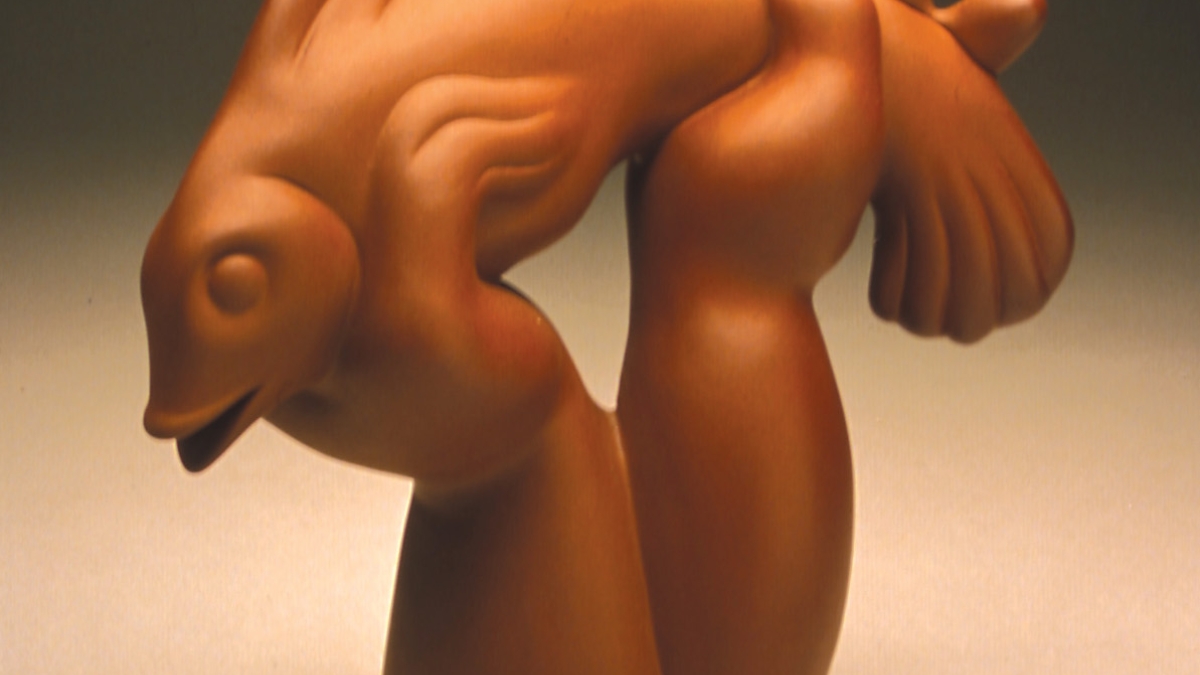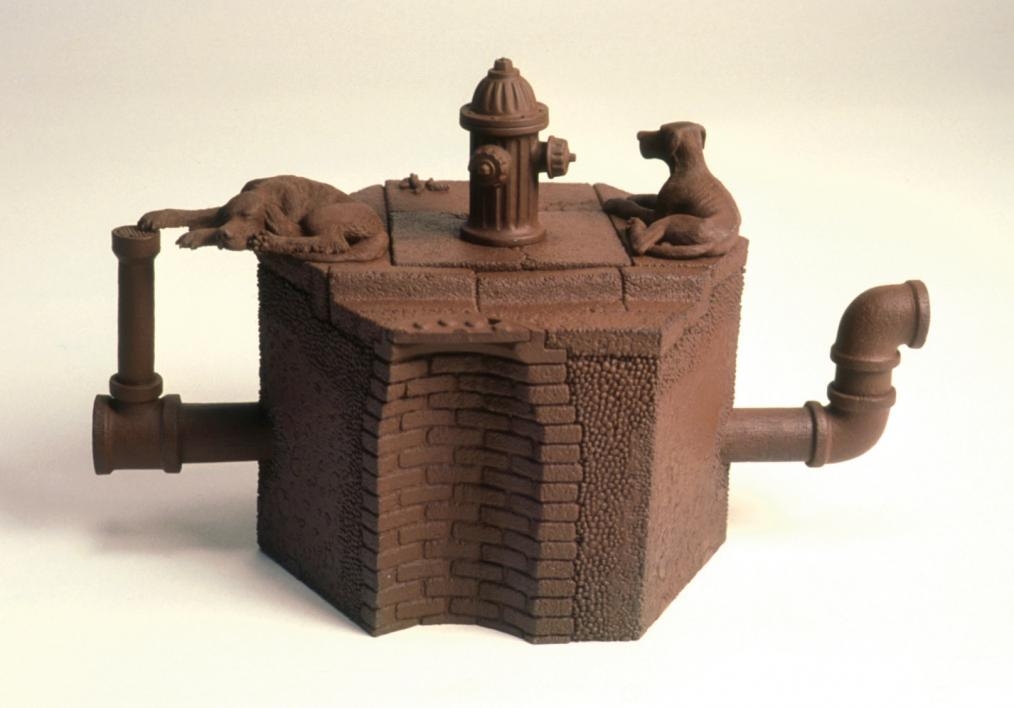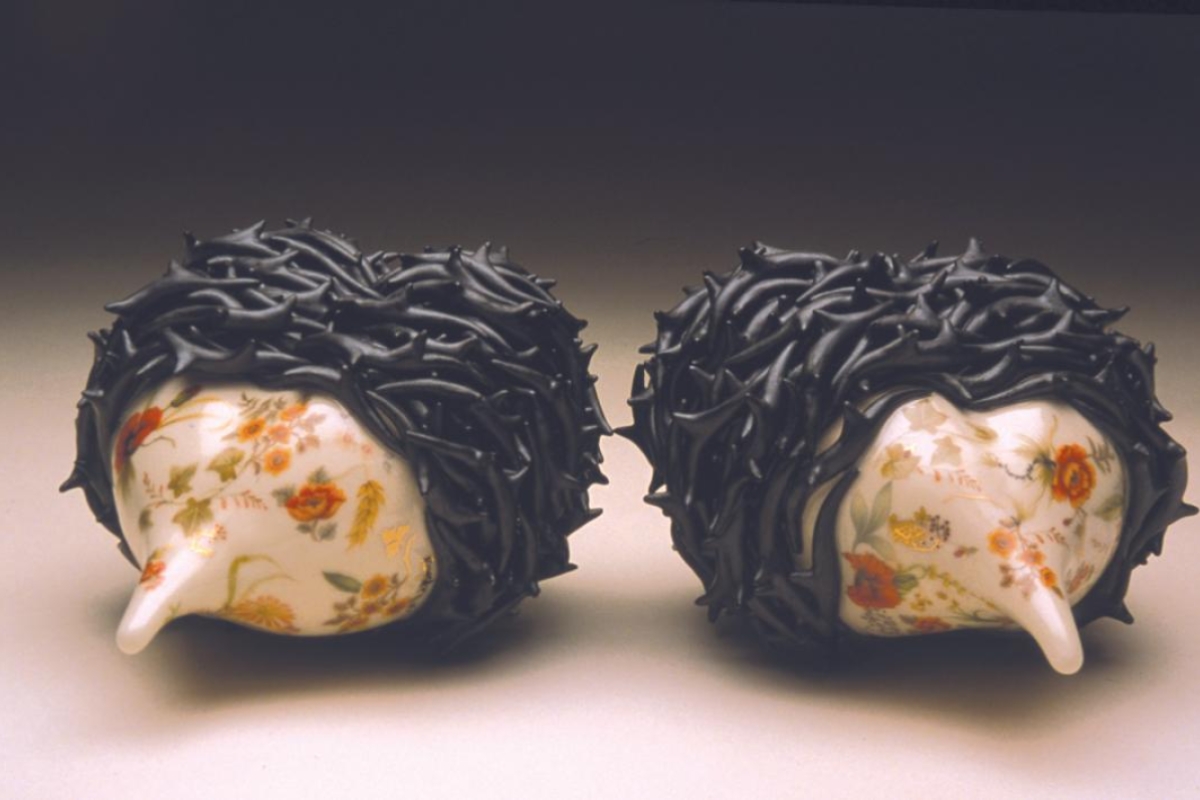Ceramics exhibition illustrates influence of ancient east on American art today

Richard Swanson, Proud Catch II Teapot, 2001. 9 1/4 x 3 1/2 x 9 inches. Courtesy of the artist.
Photo courtesy of Herberger Institute for Design and the Arts
TEMPE, Ariz. – The impact of the ancient art form of Chinese teapots on today’s American ceramics is the theme of a new exhibition at the ASU Art Museum’s Ceramics Research Center.
Beyond Boundaries: The Yixing Influence on Contemporary American Ceramics will open on Oct. 3, 2003 and run through Feb. 7, 2004. It presents the work of seven American ceramic artists influenced by the pottery traditions of Yixing, China. Yixing is a county in Southeast China that has been a center of ceramic production for over 1,000 years.
The teapot form was most revered by Chinese tea masters dating back to the 16th century when they commissioned potters to create works depicting the natural world. The vessels transcended pure function, serving as an avenue for expression inspired by revered art forms such as calligraphy, poetry and painting.
Beyond Boundaries will feature the work of Richard Notkin – the American leader in raising awareness of the Yixing tradition – as well as Eric Van Eimiren, Gayle Fichtinger, Geo Lastimirsky, Beth Lo, Richard Swanson and Kathleen Royster.
Notkin is an internationally acclaimed artist who first traveled to China in 1991. His work has been greatly influenced by Yixing ware and mixes social and political imagery that speaks to our society’s current situations. His sense of proportion, attention to detail and use of the format for storytelling are in harmony with the Eastern antecedents.
Many of the other artists in the exhibition have also traveled to China and are involved in an ongoing dialogue and exchange of ideas and techniques, says the ASU Art Museum’s curator of ceramics, Peter Held.
“While their work finds a common source of inspiration, it also demonstrates a highly individual approach to scale, subject matter and aesthetic approach,” he said.
A free public reception from 7-9 p.m., Oct. 3, will mark the opening of Beyond Boundaries: The Yixing Influence on Contemporary American Ceramics. Richard Notkin will present a free lecture at 3 p.m., Nov. 16 in AED60 (architecture building) on ASU’s main campus. He also will lead a demonstration workshop at the ASU Ceramics Studios on Nov. 15-16. Cost for the workshop is $100 and there is a 10 per cent discount for students.
The ASU Art Museum is a division of The Katherine K. Herberger College of Fine Arts at Arizona State University. The Ceramics Research Center is located on the northeast corner of Mill Avenue and 10th Street, Tempe. For more information, please call (480) 965-2787 or visit the museum online at http://asuartmuseum.asu.edu.
| When You Go: | |
| Location: | Ceramics Research Center, corner Mill Avenue and 10th Street, Tempe. |
| Date & Time: | Beyond Boundaries: The Yixing Influence on Contemporary American Ceramics runs Oct. 3, 2003 – Feb. 7, 2004. A free public reception from 7-9 p.m., Oct. 3, will open Beyond Boundaries. Richard Notkin will present a lecture at 3 p.m., Nov. 16 in AED60 (architecture building) on ASU’s main campus. A demonstration workshop by Notkin will take place at the ASU Ceramics Studios on Nov. 15-16. Cost is $100, with a 10 per cent discount for students. |
| Parking: | Free parking is available in ASU Art Museum-marked spaces at the south end of Tempe Center, located at the NE corner of Mill Avenue and 10th Street. Visitors using museum spaces must sign in at the front desk in the lobby of the Nelson Fine Arts Center. ASU parking is also free on weekends and after 7 p.m. on weeknights. |
| Website: | http://asuartmuseum.asu.edu |
| Cost: | Free except for the Richard Notkin workshop, which costs $100. |
Media Contact:
Jennifer Pringle
480-965-8795
jennifer.pringle@asu.edu


